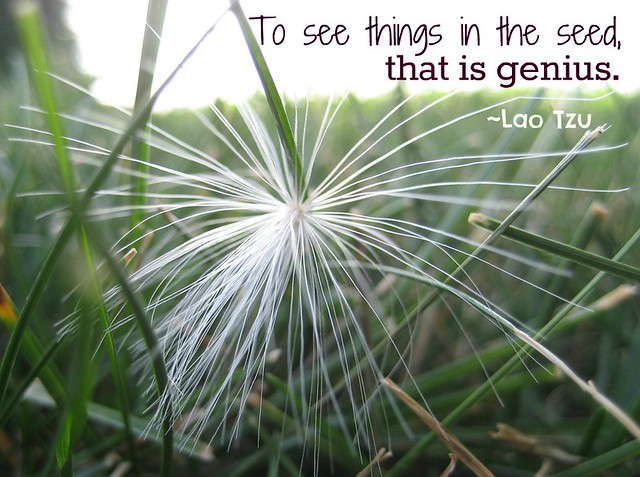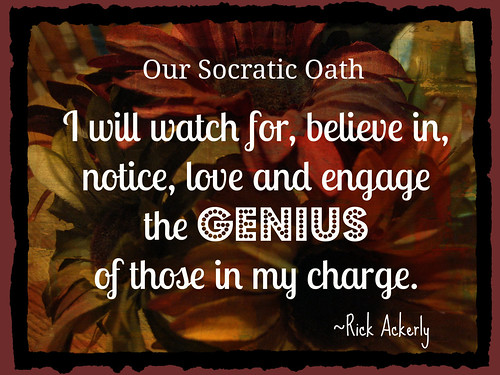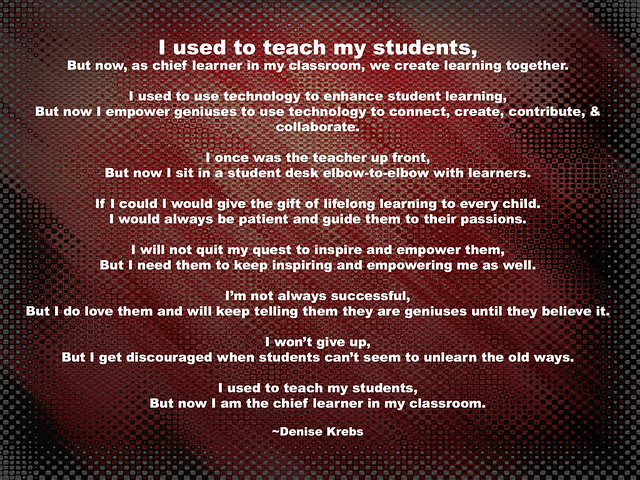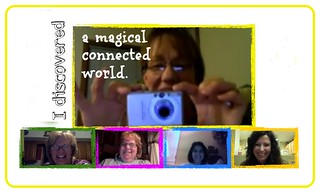Ouch…I just re-read Ewan McIntosh’s post, “20% Time and Schools: Not the Best of Bedfellows.” I must say, as much as I respect his work, I disagree with most of this post. Especially this bolded line, jumping out at us in his first paragraph: But in schools, [20% Time] often seems to fall short of our expectations of creative genius.
When I started genius hour with my students in 2011, I did not have expectations of their creative genius. I had expectations that they would learn to learn and become more creative. That’s all! To go in with set expectations of what creative genius looks like in our students is dangerous to the advancement of creativity and innovation. Every one of us who dares to become a teacher better acknowledge the fact that we will have students smarter and more creative than ourselves. (At any age!)
Giving students time for genius hour is tantamount to creating a climate of creativity. It’s not about EXPECTING students to create works of genius, that I would then set against my standard of what hits the mark of genius. My goal is always that they will grow in creativity. Big difference! Ewan said, “…there are moments of genius…but they are by a small proportion of students, with the vast majority of ideas failing to hit the mark.”

Of course only a small percentage of students are going to produce amazing “genius” inventions in elementary or high school. Only a precious few 4-year-olds are going to spend hours begging the world, “Don’t kill animals,” like Hayley did as described in The Passion-Driven Classroom. Our students are not ALL going to be the next Albert Einsteins or Marie Curies or Steve Jobses or Grace Murray Hoppers. However, they can all grow more ingenious, inquisitive, original, flexible, adaptable, persistent, willing to take risks and live with ambiguity. If given enough time, they can become an expert in something they love, which leads to even more creativity, and possibly to genius inventions and problem-solving further down the road.
My goal in promoting genius hour is hopefully to help stop the insanity of coloring in the lines and getting candy for doing worksheets and lining up in straight rows and doing only what the teacher says. Remember, that’s dangerous, for many of our students will eventually out-think, out-learn, and out-perform their teachers. We have to encourage that to happen, not stifle it!
This fall I had the opportunity to talk to four new kindergarten students, all with different teachers. My standard question for them was, “Do you learn how to color in the lines in kindergarten?
“Oh, yes,” one said. “Some kids try to color too fast and just scribble to get done so they can do what the teacher said you could do after we finish coloring, like read a book, use the white boards, and stuff like that.” I heard something similar from all of these kindergarten friends.
Yes, kindergarten classrooms are full of amazing supplies and “stuff like that.” How about if we let them use these things, even before they color in the lines with colors that make sense? What would happen if we let them make some learning decisions about coloring or reading or writing on white boards or using Legos or making art or inventions or what have you? I know all the schools aren’t Montessori, but can’t we just let them have some time to have fun learning to learn what they want?
When I first started teaching, I thought second grade was about the age students began to lose some of the joy of school. It got too hard or too demanding or they fell behind in reading. Now it seems to be happening with more kindergarteners. All of a sudden, after two years of lining up to teacher expectations in preschool, they are already finished with the joy and now don’t like school in kindergarten! (Speaking of kindergarten, watch this great video about Lifelong Kindergarten.)

We need genius hour, not because Google or 3M does it. It’s not about taking products to market, as it is for these companies. Ewan suggests that 99% of the products that come from the business world’s 20% time are mediocre, but I disagree that you can transfer that statistic to schools. Student 20% time projects that “miss the mark” or fail to meet “OUR expectations of creative genius” are not chaff, but rather the good seeds of creation.
We are making citizens who can contribute and make a difference in the world. Genius hour gives students and teachers the gift of time to learn to be creative and remember their earlier love for learning.
Give students a class period, an hour, or 20% of their time to learn like this and watch the learning in the other 80%-95% of your week grow and blossom.











